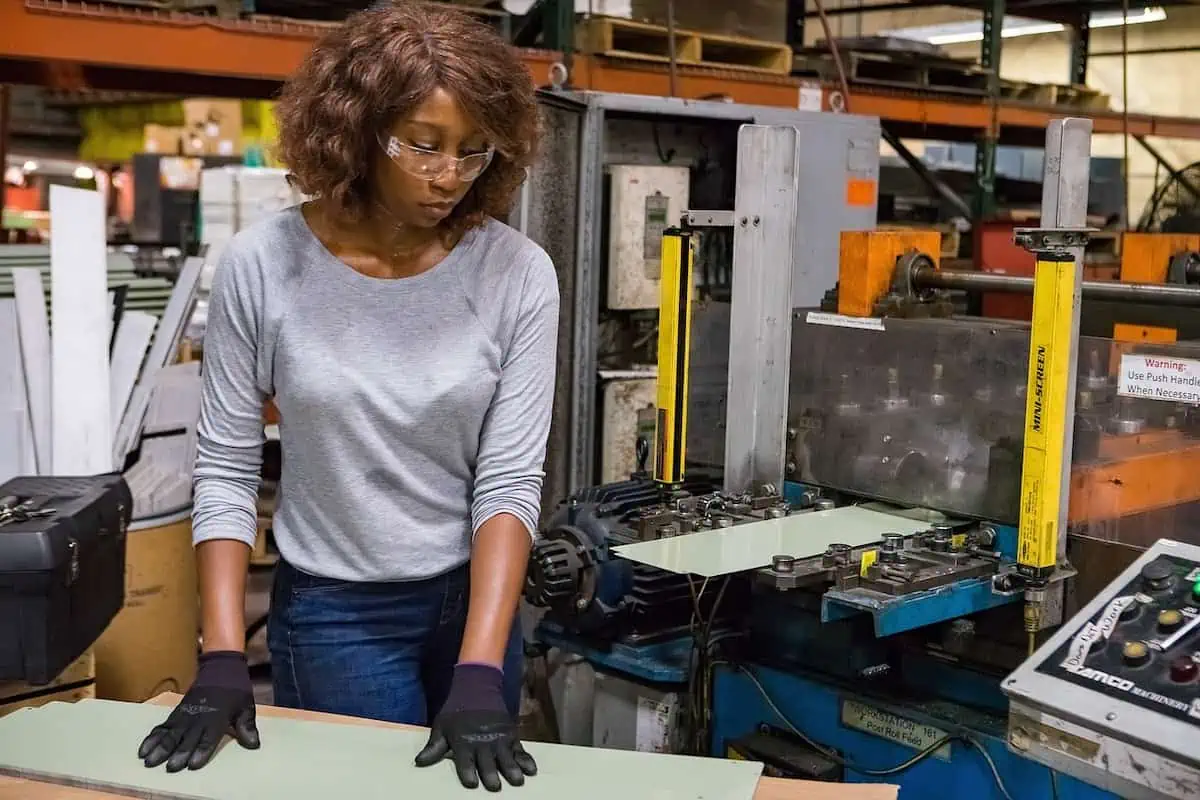The production of electronic devices relies heavily on sheet metal fabrication because it provides the parts and enclosures needed to house and safeguard delicate electronic circuitry. Time and cost optimization in sheet metal fabrication is becoming more and more crucial for manufacturers as the market for electronic devices grows.
Faster production cycles are made possible by efficient fabrication processes, which also help to reduce costs and enhance the overall quality of the final product.
To achieve optimal time and cost efficiency in sheet metal fabrication for electronics, a range of techniques that simplify the manufacturing process and increase productivity. These methods encompass various aspects of fabrication, including design considerations, material selection, tooling, automation, and workflow optimization.
By implementing these strategies, manufacturers can enhance custom metal fabrication, minimize waste, reduce lead times, and gain a competitive edge in the dynamic electronics market. These practical tips and tricks enable manufacturers to improve overall efficiency, meet customer demands, and stay ahead in a rapidly evolving industry.
This guide will give a detailed introduction to the tips and tricks for optimizing time and cost in sheet metal fabrication for electronics.
Efficiency in Design
Consider manufacturability when designing components. Optimize building and material use, reduce the number of parts, and simplify designs. Create effective, streamlined designs that are simple to fabricate using design software and tools.
Material Choice
Select components that are affordable, accessible, and appropriate for the intended use. To ensure the best material choice, consider elements like material properties, suitability for fabrication processes, and long-term performance.
Modern Tooling Methods
To improve precision, shorten cycle times, and cut waste, use cutting-edge tooling techniques like CNC machining, laser cutting, and progressive die stamping. In order to increase productivity and efficiency, spend money on high-quality equipment and tools.
Robotics and Automation
To improve consistency, lower labor costs, and increase throughput, automate and roboticize the sheet metal fabrication process. Automated systems can manage monotonous tasks, speed up production, and reduce errors.
Workflow Improvement
Identify bottlenecks in the production process and optimize it to make it more efficient. Reduce lead times, eliminate non-value-added activities, and increase overall productivity by implementing lean manufacturing principles.
Supply Chain Cooperation
Develop trusting connections with suppliers who are knowledgeable about fabricating sheet metal. To ensure effective material sourcing, shorten lead times, and maximize cost-effectiveness, work closely with them.
Quality Assurance
Put in place strict quality control procedures to reduce mistakes, rework, and scrap. By using inspection and testing methods, you can lower the possibility of expensive rejections or warranty claims by making sure that manufactured components meet the necessary quality standards.
Continual Development
By routinely analyzing and improving fabrication processes, you can promote a culture of continuous improvement. To find areas for improvement and implement creative solutions, encourage employee input and participation.
Communication and Cooperation
Encourage productive cooperation and communication between production teams, suppliers, and design engineers. Communication channels that are open and clear help to avoid misunderstandings, cut down on delays, and boost productivity.
Cost estimation and analysis
For every project, conduct a thorough cost analysis and estimation. To accurately estimate the project’s cost and find opportunities for cost optimization, take into account variables like material costs, labor costs, equipment depreciation, and overhead costs.
Manufacturers can reduce the time and cost spent on sheet metal fabrication for electronics by using these tricks and tips, which will increase productivity, lower costs, and improve overall product quality.
Importance of Optimizing Time and Cost in Sheet Metal Fabrication for Electronics
For manufacturers in the highly competitive electronics sector, maximizing time and cost in sheet metal fabrication for electronics is of utmost importance. Optimizing these variables is essential for the following reasons:
Competitive Benefit
In the rapidly evolving field of electronics, it’s critical to stay one step ahead of the competition. Manufacturers can deliver goods faster and for less money by maximizing time and cost during sheet metal fabrication, giving them a competitive advantage in the market.
Shortened Time-to-Market
In the electronics sector, time is a crucial component. The success or failure of a company may depend on its capacity to launch products quickly. Manufacturers can speed up their time to market and seize opportunities before rivals by streamlining the sheet metal fabrication process and cutting lead times.
Cost Savings
Cost savings is a crucial component of any business. Manufacturers can lower production costs, boost profit margins, and provide more competitive pricing to customers by identifying sheet metal fabrication processes where time and resources can be saved.
Improved Productivity
The overall productivity of sheet metal fabrication is increased by time and cost optimization. Manufacturers can produce more parts or goods in a given amount of time, increasing output and revenue, by reducing non-value-added activities, minimizing material waste, and improving efficiency.
Enhanced Reliability and Quality
Improved fabrication techniques result in higher-quality, more dependable products. Manufacturers can ensure that the sheet metal components or metal enclosure design for electronic devices meet strict quality standards by minimizing errors, reducing rework, and improving precision, which will increase customer satisfaction and decrease warranty claims.
Adaptability and Flexibility
Customers’ demands and technology are constantly changing in the electronics industry. Manufacturers can be more adaptable and flexible thanks to improved sheet metal fabrication techniques, which make it simple to incorporate design modifications, customer requests, and iterations of new products without experiencing significant delays or price increases.
Conclusion
In conclusion, manufacturers can reduce time and costs in sheet metal fabrication by focusing on design, material selection, tooling, automation, and workflow optimization. By incorporating these strategies, they can enhance their fabrication processes, stay competitive, and deliver high-quality electronic products efficiently.

